New to the Game?
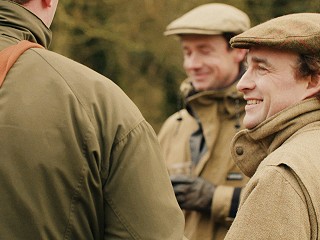
What to expect on your first game day...
Driven game shooting has become as quintessentially British as a cup of tea or moaning about the weather. It gained popularity in the UK amongst royalty and the landed gentry in the Victorian era, and as shotgun designs have evolved to become more reliable and user friendly, the sport has continued to gain momentum. It is estimated that there are around 1 million shooters in the UK, spending £2.5 billion each year on goods and services, and supporting the equivalent of 74,000 full time jobs (statistics from BASC).
If you’re new to game shooting then your first day may seem somewhat intimidating, but it needn’t be. This article will walk you through what to expect, what to wear, what to take with you and some of the main do’s and don’ts of shooting etiquette.

I would highly recommend getting yourself prepared a few weeks in advanced of your first day. This will include getting some practice with your gun on the high tower at your local clay ground and perhaps even having a game lesson. You should also consider having your gun serviced, especially if you have been doing a lot of clay shooting over the summer or haven’t taken it out of the cabinet since the end of last season. It is always best to get a professional gunsmith to check it over, just to make sure everything is working as it should and avoid any embarrassing malfunctions in the field. A strip & clean service can take up to several weeks this time of the year, as gunmakers tend to be extremely busy, so make sure you plan this in advanced.
It is also worth trying on your shooting clothing to make sure everything still fits properly and that there is nothing missing.
Click the link below to read more about preparing for your season.
https://www.agl-uk.com/latest-news/2019-07-18-preparing-for-the-season
On the day…
I would suggest organising all of your clothing and kit the night before, so that when you wake up you will feel calm and prepared, and instead of stressing out you can get ready and enjoy the excitement and anticipation. Make sure you know where you are going and what time you need to be there. Shoots are almost always in very rural locations and can sometimes be hard to find, so plan your journey and if you’re not sure exactly where to go, ask your host for directions.
When you arrive at the shoot, you should aim to find your host or the shoot captain and introduce yourself. They will in turn introduce you to your fellow guns. On a traditional shoot day, it is customary to have tea and coffee before the shooting starts, and possibly breakfast of some sort. Once all the guns have arrived and settled in, it is time for the shoot captain to give a briefing and for you to draw your pegs. Listen carefully to the briefing as it will essentially explain the rules of the day. It will normally involve a few sentences about safety and taking responsible shots (very important!) and will mention how the start and end of a drive is signalled (often a horn or a whistle). Drawing your pegs is the act of choosing in which area you will stand on the first drive. That area will be marked with a numbered peg, often a wooden stake in the ground. Each shoot has a different layout when moving peg numbers, but often you will move up two or down two numbers on each drive.
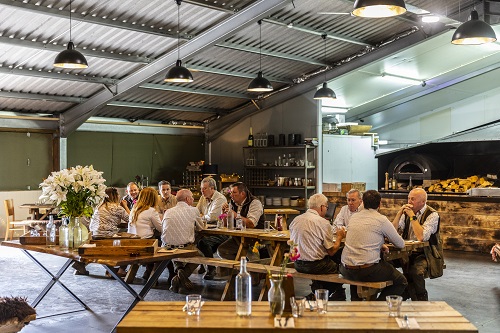
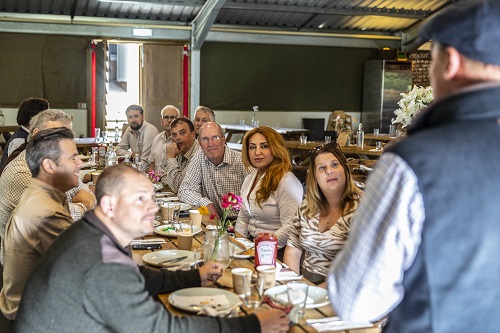
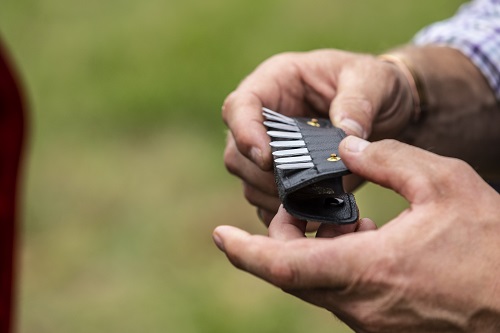
Once everyone is ready, you will head to the first drive. The method of transport varies from shoot to shoot; there may be a gun bus or you may be expected to drive your car (providing it is suitable for the terrain) or possibly share a lift with another gun. This will most likely be explained in the briefing.
When you arrive on your peg, make sure you have enough cartridges in your pocket for the drive. There is nothing worse than running out mid drive, it is incredibly embarrassing and frustrating… unfortunately I know this from previous experience!
On a lot of shoots, you will be ‘live on your peg’, which means that the drive has already begun. This will usually be confirmed in your briefing. You should get your gun out of your slip as soon as you get to your peg, load it and hold it either broken or closed and facing up towards the sky. You should try to be reasonably quiet when on the drive; sometimes making excessive noise or talking too loudly as you walk from the cars to the pegs can scare any birds that are close by and disrupt the drive itself.
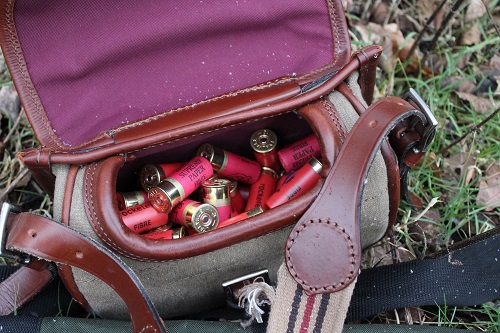
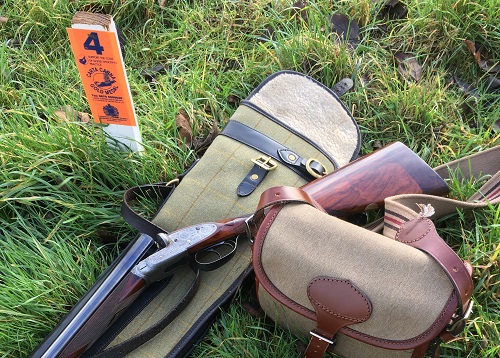
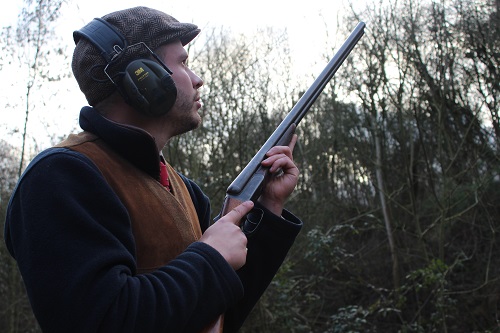
Once you start to see the birds break from the cover, it is time to really concentrate. Many shoots will ask that you do not shoot pigeons until the first pheasant / partridge has been shot as the sound of the guns can put the birds off flying straight towards the line, and make them break out to the sides of the cover.
Always ensure that the birds you are shooting at are a sensible and safe shot, within range but not too close. Aim to shoot birds that you are comfortable with; if you are not completely comfortable with a shot, do not take it.
Once the end of the drive has been signalled, it is time to collect your birds. Lots of shoots have ‘pickers up’ that will work their dogs to retrieve the birds, but if there are any that are near you, it is always polite to collect them and take them to the game cart. If you have your own dog with you, now is the time you may let it off to make a retrieval.
Try to remember where all of your birds have landed if you can; it is incredibly important that all birds are picked up, so that the game meat can be used and not left to go to waste. In the unfortunate event that you injure a bird, it is imperative that you make sure you know where it has landed, and that it has been retrieved and dispatched as quickly and humanely as possible.
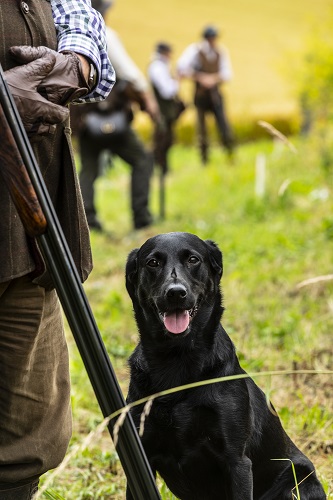

After several drives it is customary to serve elevenses, a light round of refreshments often including sausage rolls and pork pies, sometimes soup, and drinks such as tea, coffee, sloe gin and champagne. These can either be served in the field or back at the shoot lodge. It can be a nice gesture to bring a bottle or some homemade treats to give to your host or pass around the other guns.
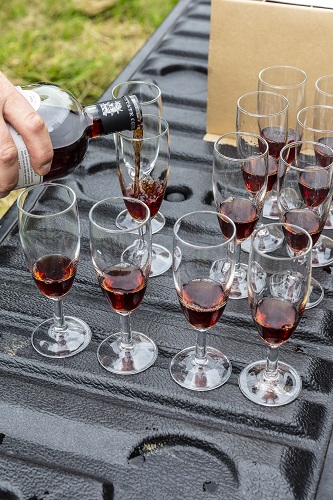
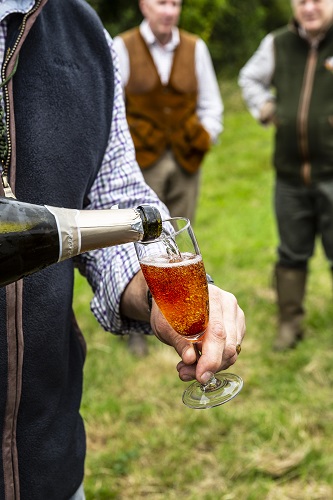
Most shoots will then have a couple more drives before stopping for lunch. Some will choose to shoot all of the drives before lunch, others will save one or two for afterwards.
At the end of the day it is customary to tip the keeper. The amount can vary, but is usually based on between £20 and £30 per 100 birds. It is advisable to double check with your host if you’re not sure how much to give. It is then polite to thank the shoot captain and the rest of the guns for their company. You will be given a game card recording the details of the bag, the amount of birds shot and the number of cartridges used. You may also be offered a brace of birds to take home, either in the feather or plucked and dressed. If you can, it is always polite to accept this offer and a great opportunity to use what you have shot. Game meat is delicious, high in protein and low in fat; it is a fantastic alternative to meat bought from the supermarket. Keep an eye on our 'NEWS' section of the website as we will be uploading game recipes throughout the season!
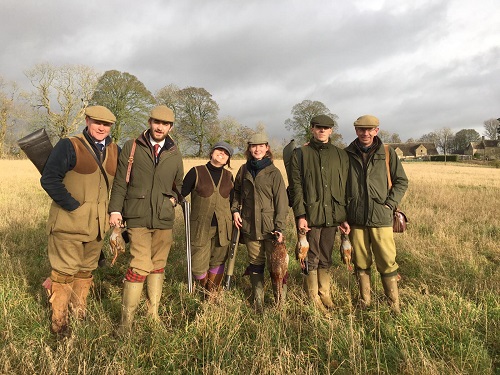
What to wear…
When dressing for a game day you need to think of function and then fashion. Some of the best game days of my life have been spent in howling winds and horizontal rain, and it is times like these that you really appreciate your kit. It is also important to feel comfortable in what you’re wearing and that you fit in with the other guns.
Driven game days are quite formal, so you will find that most people wear some type of tweed. Some guns like to wear matching tweeds; vest, breeks and jacket. Some prefer for wear totally mismatched pieces and some like to wear just a touch of tweed.
Whatever you decide, layering is important. As the weather changes throughout the day you can add or remove layers. Working from outside in, I would recommend…
- A really good quality waterproof coat, either tweed or loden
- A shooting vest, either tweed or plain green canvas/woollen, ideally not a skeet vest
- A jumper or fleece, plain rich colours work best, navy blues, forest greens, burgundy etc.
- A smart checked shirt and a tie
- Many of your fellow guns will be wearing breeks but a smart pair of moleskin trousers will work just as well. If you have opted for breeks then don’t forget your shooting socks and garters… this is the one place where you can be as flamboyant and colourful as you like!
- On your feet you will want good quality, comfortable, waterproof boots, either wellies or walking boots. It is a good idea to take a clean pair of shoes to arrive in and change back into for lunch, especially if it is served in a house or shoot room.
- When it comes to shooting, safety is key. Ear defenders are an absolute must. A hat is recommended as it will protect your head and also keep you warm. Try to avoid baseball caps and opt for something more traditional such as a flat cap. Glasses are also a good idea for safety, and sunglasses can be very useful if the drive is facing the sun.

Items to take with you…
- Cartridge bag, to carry your cartridges in.
- Cartridges, make sure they are the appropriate gauge for your gun and size for your quarry.
- Gun, this always helps! If you don’t actually own a gun, make sure you have arranged to loan or borrow one from your host or a friend.
- Your shotgun license
- Insurance details. We highly recommend that you have insurance for your shooting. Companies such as British Association of Shooting and Conservation (BASC) and The Countryside Alliance are some of the most popular.
- Slip, to safely carry your gun to and from the drives.
- Cleaning kit, it may be worth giving your gun a quick clean before putting it back in it’s case to travel home. This is especially useful if you have been shooting in the rain.
- Gun case, it is always useful to be able to dismantle your gun and travel it safely.
- Gift for the host, a nice little something to say thank you. This can range from a bottle of sloe gin and some nice chocolates to a decorative ornament.
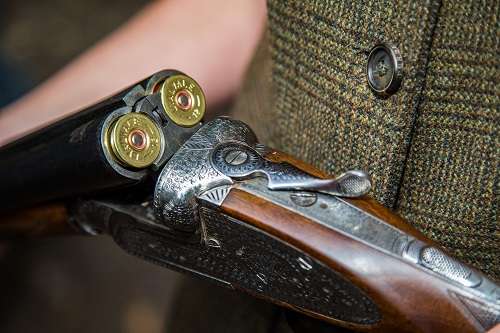
Etiquette
The etiquette of a shoot day is quite straightforward; be polite, be friendly, listen to your shoot captain and above all be safe. Shooting is primarily a form of sport and if you behave like a true and fair sportsman, then you can’t go far wrong. If you are not sure about something, ask your host or shoot captain. Respect your host, your fellow guns, the beaters and everyone who has worked hard to organise this day for you, and most importantly, respect your quarry. This is not the clay ground and you are not simply shooting at targets. They are real animals that deserve your respect, and only the most suitable, well thought out shot will be acceptable. Don’t be greedy, don’t shoot other guns birds and try not to shoot birds above your skill level. Last but not least, enjoy yourself. Game shooting is an incredible sport, that is hugely enjoyable and makes immense contributions to the upkeep and maintenance of our beautiful countryside.
If you have any questions about game shooting, please don’t hesitate to get in touch with the AGL Team. We are all experienced and passionate game shots and would be more than happy to help.
Call 01582 849382 or email us at info@agl-uk.com
If you are looking for some more shooting this season, or currently don't have anything booked, we have three driven days available, based in the Cotswolds.
Saturday 28th September – 150 bird driven partridge
Saturday 5th October – 150 bird mixed bag
Saturday 2nd November – 150 bird mixed bag
Please get in touch on the details above to find out more.